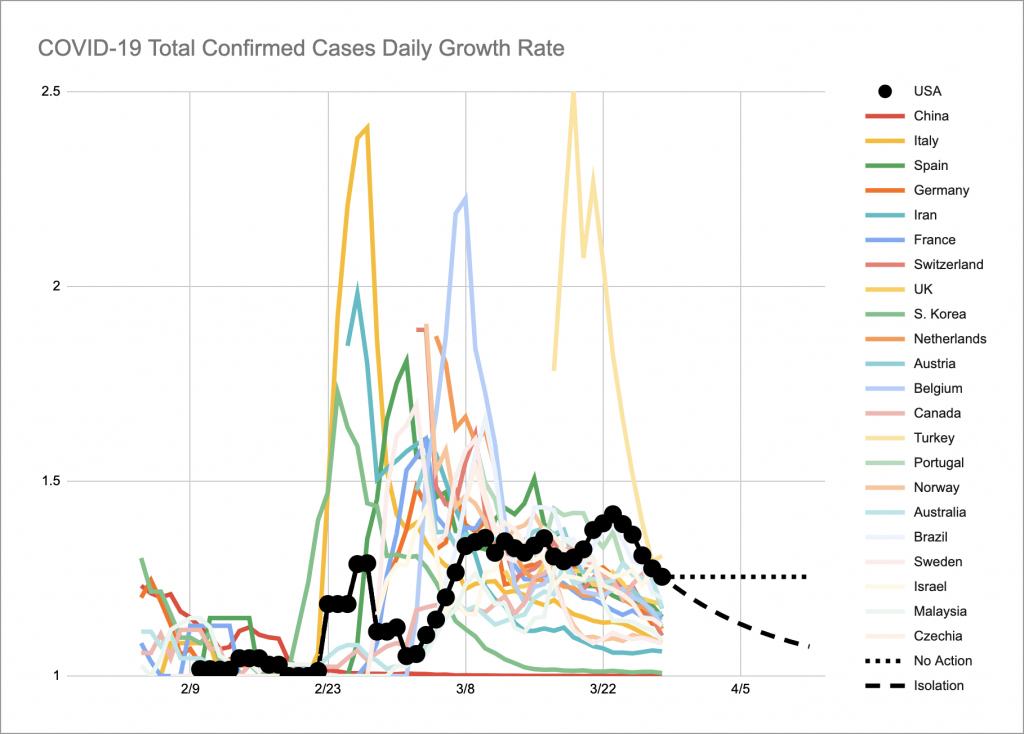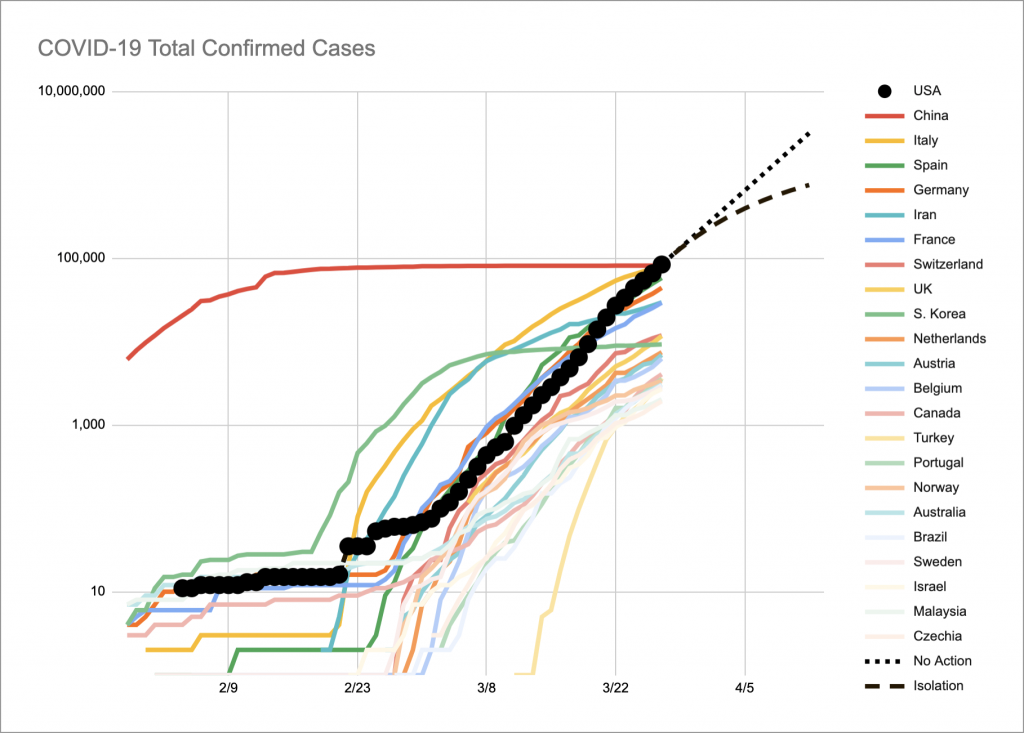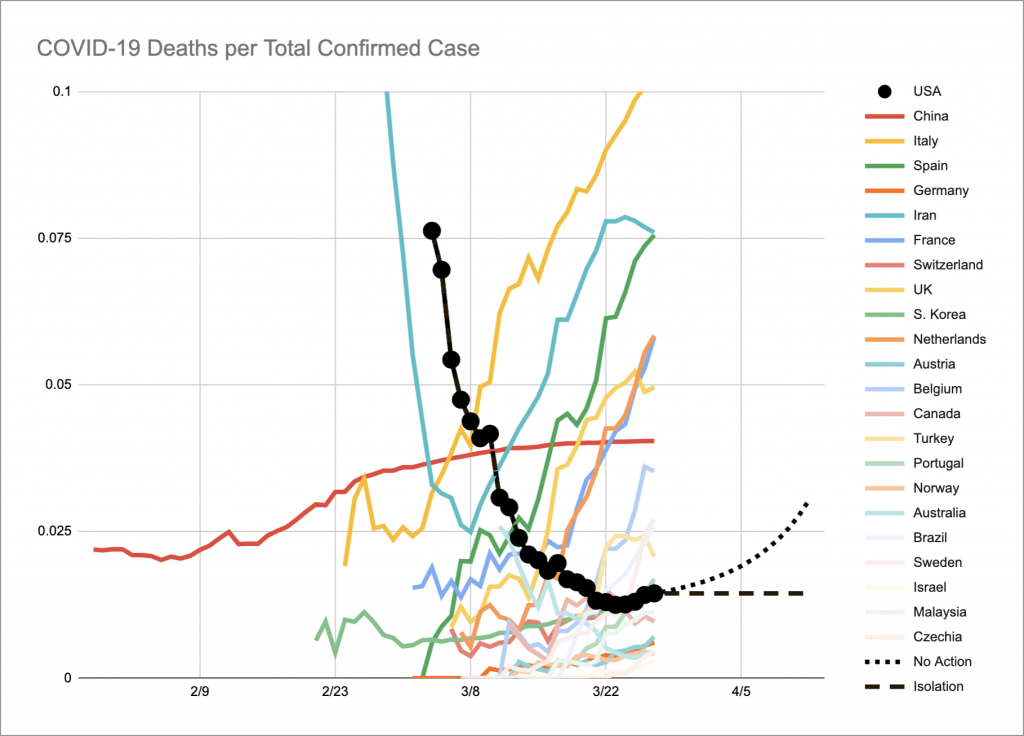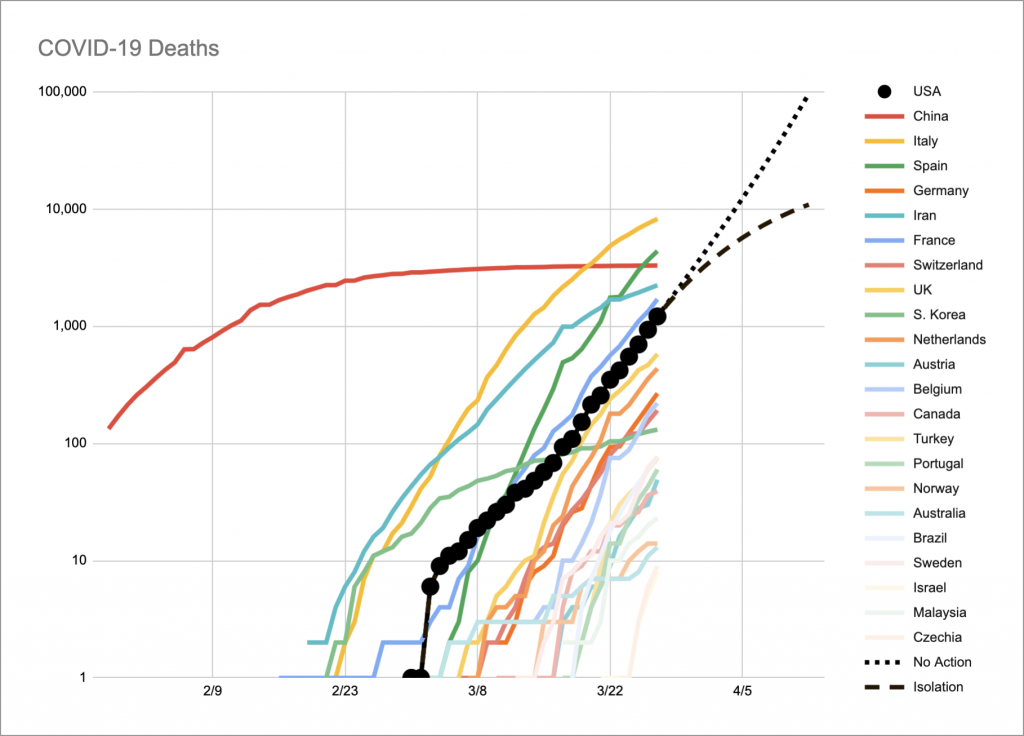COVID-19 Over the Next Two Weeks
Friday, March 27th, 2020I am not an epidemiologist. That’s very important to keep in mind.
But I do have a little experience with data analysis and spreadsheets so I’ve been tracking the COVID-19 data from worldometers.info in this spreadsheet, trying to make sense of it. Specifically, I’ve been trying to figure out what might happen over the next couple of weeks, say, by Easter.
Bottom line: what we do next could be the difference between 10,000 and 100,000 deaths.
First, I started by modeling the “growth rate” of the total confirmed positive cases. This isn’t a great number because we know we’re not testing everyone, so the actual number is probably significantly higher. But looking at all the countries, there’s a noticeable pattern:

Every country went through a spike as it saw outbreaks and then a gradual tapering down as they started to take action. The U.S. started taking aggressive action a week or two ago (depending on the state) and so it’s possible that we’re starting to see a slowdown of the growth. The two dotted lines represent my guess over the next two weeks depending on whether we stop isolation or if we continue isolating. So from there, we can extrapolate numbers for the total confirmed cases:

Depending on what we do, this could be the difference between 750,000 and 3,000,000 total confirmed cases. From there, I tried to estimate the number of total deaths that would be by trying to guess what the “lethality” is (the number of deaths per confirmed case). Again, it’s not a great number because there are so many factors going on. But looking at the graphs for all the countries, there seems to be a reasonable pattern:

The countries that have taken aggressive action seem to level off at some ratio, which is probably proportional to how much testing they do. But some countries start seeing so many cases that their medical infrastructure starts to get overrun and then they start seeing more deaths per case. I took a guess at what that might look like in the U.S. From there, we can use that to extrapolate how many people might die in total:

And what you see there is the difference between 10,000 and 100,000 people dying from this. The scary thing about the “No Action” scenario is that it’s exponential growth, which means that it’d hit 1,000,000 deaths a week later. This is why we need to take this seriously. Yes, the cost is huge and not just economic. But if we do the right thing, we can get through this.
In related news, I’m glad to see that Japan postponed the Tokyo Olympics. I’ve never been so happy to have a video made obsolete.










